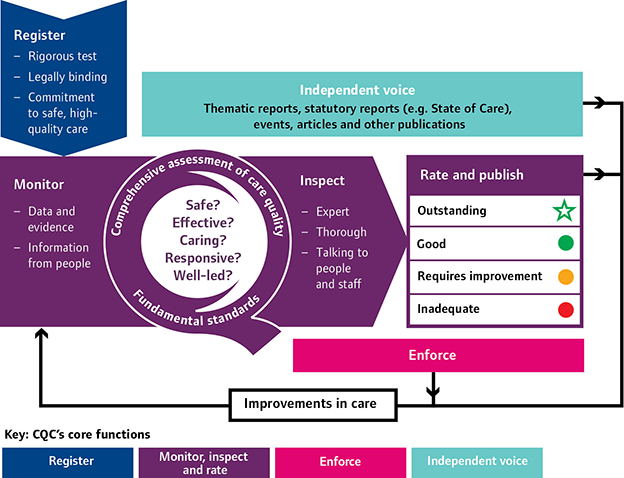Launching a successful supported living service can be a complex and challenging endeavour. With the proper guidance and knowledge, however, it is possible to create a service that meets the needs of individuals in a way that is both personalized and empowering. This comprehensive guide will provide you with the essential steps and strategies to launch and manage a supported living service successfully.
From understanding the needs of your target audience to developing a clear vision and mission statement, we will cover every aspect of building a solid foundation for your service. We will also delve into the crucial elements of staff recruitment and training and how to establish effective partnerships and collaborations.
Additionally, we will explore the legal and regulatory considerations essential for operating a supported living service within the boundaries of the law. With this guide, you will gain valuable insights and actionable tips to ensure that your supported living service is successful and impactful.
Whether you are just starting or looking to improve an existing service, this ultimate guide is your go-to resource for launching a successful supported living service and it would be constantly reveiewed for originality and information update.
Note: Your first point of call is to understand the positions of, and the documentations required by the CQC on Supported Living.
Contents
Understanding supported living services
Supported living services are designed to provide individuals with disabilities or special needs the opportunity to live independently in a community setting. Unlike traditional residential care facilities, assisted living services promote independence and choice for individuals, allowing them to control their own lives. These services offer a range of support, including assistance with daily living activities, access to community resources, and help developing and maintaining social networks.
The key to understanding supported living services is recognizing that each individual is unique and has different needs and preferences. It is crucial to adopt a person-centred approach, where the individual is at the centre of decision-making and planning. This means involving the individual, their family, and other support networks in designing and delivering services that meet their needs and goals.
Creating a successful supported living service starts with clearly understanding the principles and values underpinning the concept. It is essential to have a strong belief in the rights of individuals to live a life of their choosing, free from unnecessary restrictions or limitations. By embracing the principles of choice, control, and independence, you can create a service that empowers individuals to live the life they want.
The importance of proper planning and preparation
Launching a supported living service requires careful planning and preparation. Before embarking on this journey, it is essential to conduct a thorough analysis of the market and identify the needs and preferences of your target demographics.
Market research is essential to understand your area’s demand for supported living services. This involves gathering data on the potential residents’ demographics, preferences, and requirements. By conducting surveys, interviews, and focus groups, you can gather valuable insights that will help you tailor your services to meet the specific needs of your target audience.
Once you have gathered the necessary information, developing a comprehensive business plan is essential. This plan should outline your goals, objectives, and strategies for achieving them. It should also include a detailed analysis of the market and a financial plan outlining the resources and funding required to launch and sustain your service.
Conducting market research and identifying target demographics
To ensure the success of your supported living service, it is crucial to conduct thorough market research and identify your target demographics. This involves gathering data on the demographics, preferences, and needs of potential residents in your area.
Start by analyzing the population in your target area. Look at age, income level, and disability prevalence to determine the potential demand for supported living services. Conduct surveys, interviews, and focus groups to gather insights into your target audience’s needs and preferences.
In addition to demographic data, it is essential to understand the psychographic characteristics of your target audience. This includes their values, beliefs, and lifestyle choices. Understanding these factors allows you to tailor your services to meet your residents’ unique needs and desires.
Once you have gathered the necessary data, create a customer profile representing your target audience. This profile should include age range, income level, disability type, and specific needs or preferences. Understanding your target demographics will help you develop a particular service to meet their needs.
Developing a comprehensive business plan
A comprehensive business plan is essential for launching a successful supported living service. This plan serves as a roadmap for your benefit, outlining your goals, strategies, and financial projections.
Start by clearly defining your mission and vision for the service. What is the overarching purpose of your supported living service? What impact do you want to make in the lives of your residents? By clearly articulating your mission and vision, you can create a sense of purpose and direction for your service.
Note: CQC’s operating model

Next, conduct a thorough analysis of the market and competition. Identify the strengths, weaknesses, opportunities, and threats you may face in the market. This will help you develop strategies to differentiate your service and attract residents.
In addition to market analysis, your business plan should include a detailed description of your service offerings, including the types of support and care you will provide. It should also outline your marketing and sales strategies, as well as your pricing and revenue projections.
Securing funding and resources for your supported living service
Obtaining financing and resources is critical in launching a supported living service. Providing the level of care and help your residents need can be challenging without adequate financial support.
Start by identifying potential funding sources. This may include government grants, private donations, or partnerships with local businesses or organizations. Research each funding source’s eligibility criteria and application process to ensure you meet the requirements.
Developing a budget that outlines your expenses and revenue projections is also essential. This will help you determine how much funding you need to secure and how you will allocate your resources. Include staff salaries, training and development, property maintenance, and administrative expenses.
In addition to financial resources, securing the necessary equipment and supplies to support your residents is essential. This may include assistive technology, adaptive equipment, and specialized furniture. Research the options available to you and determine the most cost-effective solutions that meet the needs of your residents.
Hiring and training staff members
Hiring and training qualified staff members is crucial to the success of your supported living service. Your staff will be responsible for providing the care and help that your residents need to live independently.
Start by developing a clear job description for each role in your service. This should outline the responsibilities, qualifications, and skills required for each position. Be sure to include any specific certifications or training that is necessary.
Once you have defined the roles, create a recruitment strategy to attract qualified candidates. This may include advertising job openings on relevant websites, partnering with local educational institutions, or attending job fairs. Communicate your organization’s values and mission to attract candidates who align with your service’s goals.
Once you have hired your staff, providing them with comprehensive training is essential. This should include initial training to familiarize them with your service’s policies and procedures and ongoing training to enhance their skills and knowledge. Consider partnering with local organizations or consultants specialising in disability support to provide specialized training for your staff.
Creating a safe and welcoming environment for residents
Creating a safe and welcoming environment is essential to the success of your supported living service. Your residents should feel comfortable and secure in their homes, knowing their needs will be met and their rights respected.
Start by ensuring that your physical environment is accessible and meets the needs of your residents. This may include installing ramps, widening doorways, and adapting bathrooms to accommodate individuals with disabilities. Consult with accessibility experts to ensure your facility meets the necessary standards and regulations.
In addition to physical accessibility, creating a culture of inclusivity and respect within your service is essential. This involves providing training to staff members on disability awareness and sensitivity. Encourage staff to actively engage with residents, listen to their needs, and apply them in decision-making.
Organizing social activities and events promotes a sense of community within your service. This will help residents build relationships and develop a support network within the service. Encourage residents to participate in community activities and access community resources to enhance their social connections and independence.
Marketing and promoting your supported living service
Marketing and promoting your supported living service is essential to attract residents and raise awareness in the community. A strong marketing strategy will help you differentiate your service and communicate the value you offer to potential residents and their families.
Start by developing a clear brand identity for your service. This includes creating a compelling logo, tagline, and brand messaging that reflects your service’s unique value and mission. Ensure your brand identity is consistently applied across all marketing materials and communication channels.
Supported Living emerges as a foundational model within care services, championing autonomy, respect, and inclusivity. It encapsulates more than just basic accommodation and care needs; it is a philosophical shift towards a more holistic, inclusive, and individualized form of care, aiming to integrate individuals seamlessly into their communities while respecting their unique needs, choices, and life paths.
Olufemi Akinyemi
Next, develop a marketing plan that outlines your target audience, key messages, and marketing tactics. This may include creating a website, using social media platforms, attending community events, and partnering with local organizations or healthcare professionals.
Remember to highlight your service’s unique features and benefits in your marketing materials. This could include personalized care plans, a wide range of support services, or innovative technology solutions. Use testimonials and success stories from current residents and their families to demonstrate the positive impact of your service.
Monitoring and evaluating the success of your service
Monitoring and assessing the success of your supported living service is crucial to ensure that you are meeting the needs of your residents and achieving your goals. Regular assessment and feedback will help you identify areas for improvement and make necessary adjustments.
Start by developing a set of key performance indicators (KPIs) that align with your service’s goals and objectives. These could include resident satisfaction rates, staff retention rates, or financial performance indicators. Regularly track and analyze these KPIs to measure your service’s success and identify improvement areas.
In addition to quantitative data, gathering qualitative feedback from residents, their families, and staff members is essential. This could be done through surveys, focus groups, or one-on-one interviews. Use this feedback to identify areas of strength and areas that need improvement.
Regularly review and update your policies and procedures based on the feedback and learnings from your monitoring and evaluation activities. This will help you continuously improve the quality of care and support you provide your residents.
10: Conclusion and future growth opportunities
Launching and managing a successful supported living service requires careful planning, dedication, and a deep understanding of the needs and preferences of individuals with disabilities. By following the steps and strategies outlined in this guide, you can create a service that is not only successful but also impactful.
Remember, it is essential to adopt a person-centred approach and involve the individual, their family, and other support networks in the decision-making and planning process. By prioritizing choice, control, and independence, you can create a service that empowers individuals to live the life they want.
As you continue on your journey, be open to learning and adapting. The field of supported living is constantly evolving, and new opportunities for growth and innovation are emerging. Please stay connected with industry trends, collaborate with other service providers, and continuously seek feedback from residents and their families. By embracing a culture of continuous improvement, you can ensure that your supported living service remains successful and impactful for years to come.
This comprehensive guide gives you the knowledge and tools to launch and manage a successful supported living service confidently. Whether you are just starting or looking to improve an existing service, this guide is a go-to resource for all your needs. Remember, with the proper planning, preparation, and dedication, you can make a positive difference in the lives of individuals with disabilities and create a service that empowers them to live their best lives.

























